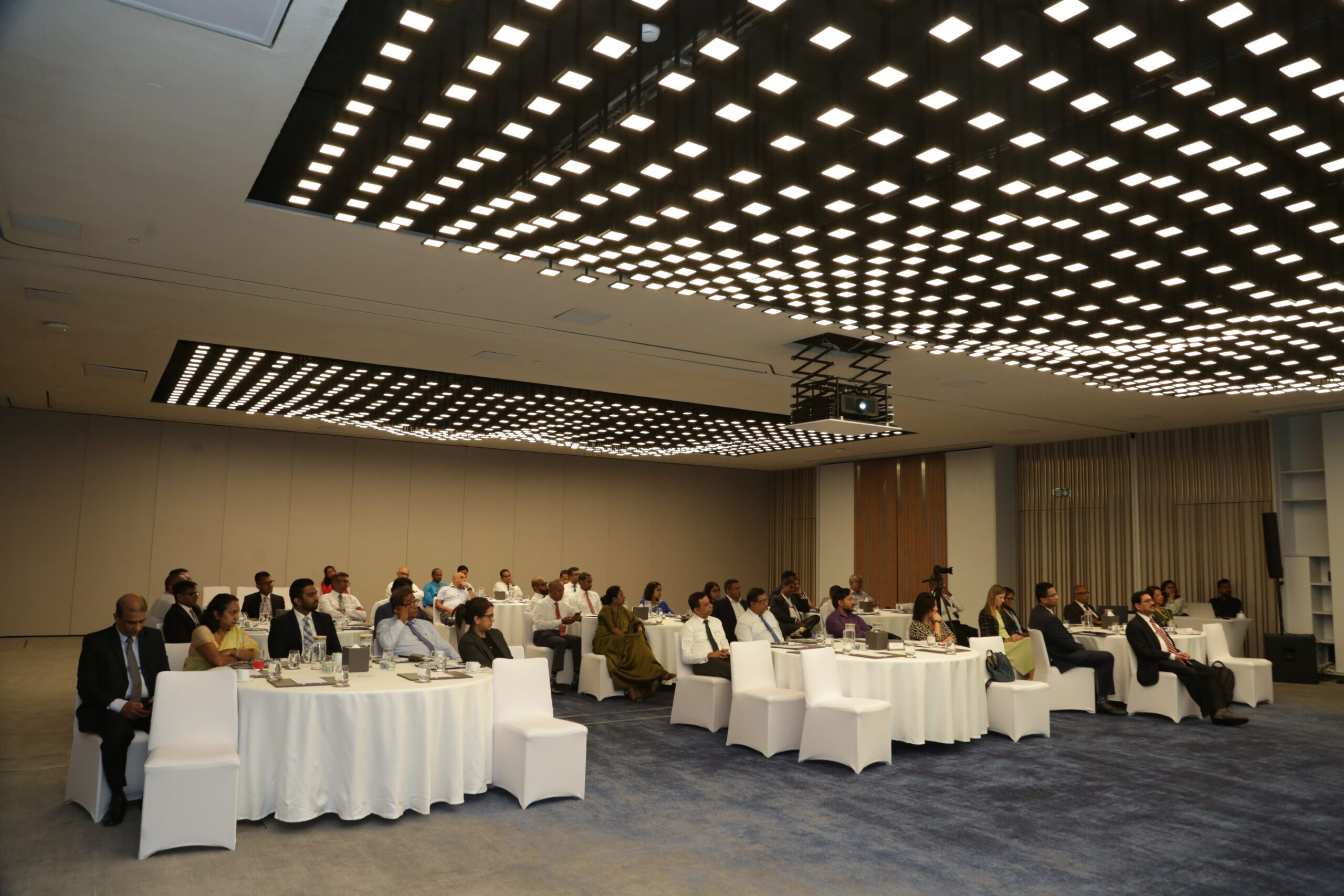
CEOs of Financial Institutions Convene for a Strategic Briefing on Green Finance
On Tuesday, 26th November 2024, Biodiversity Sri Lanka (BSL) hosted a strategic briefing at Cinnamon Life, Colombo, under the EU-funded SWITCH Asia PLASTICS Project. This initiative, led by ACTED in partnership with BSL, ISB, STENUM Asia, and TERI, focuses on reducing plastic waste and promoting a circular economy in Sri Lanka.
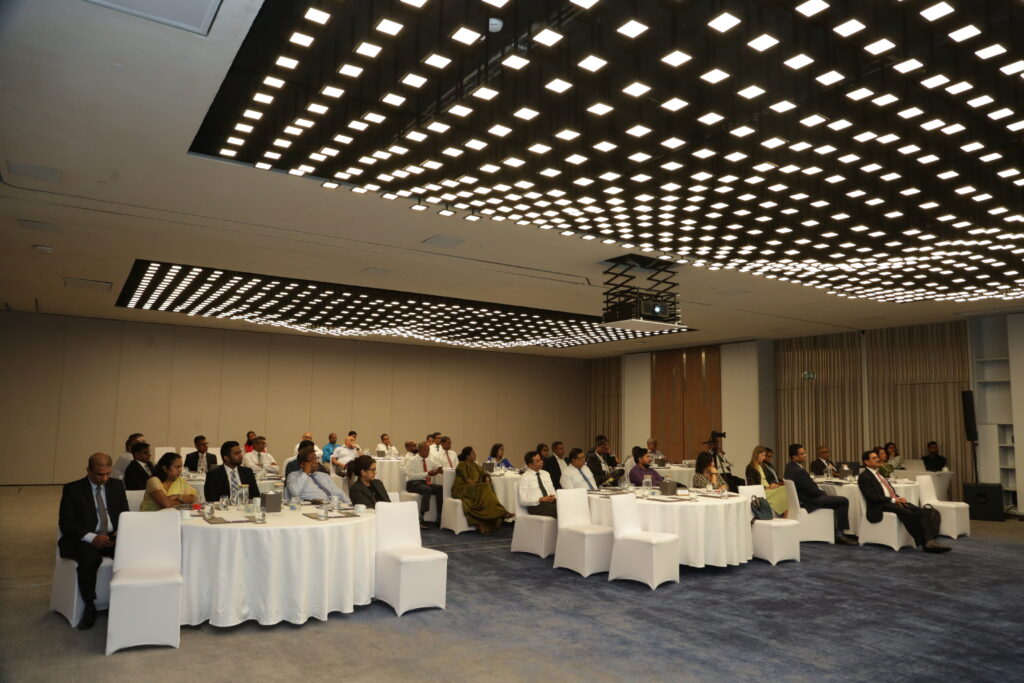
The event was a major milestone, bringing together representatives from 32 organisations, including CEOs of leading financial institutions. Its aim was to explore the role of green financial services in fostering sustainable business practices and resilience within Sri Lanka’s economy.
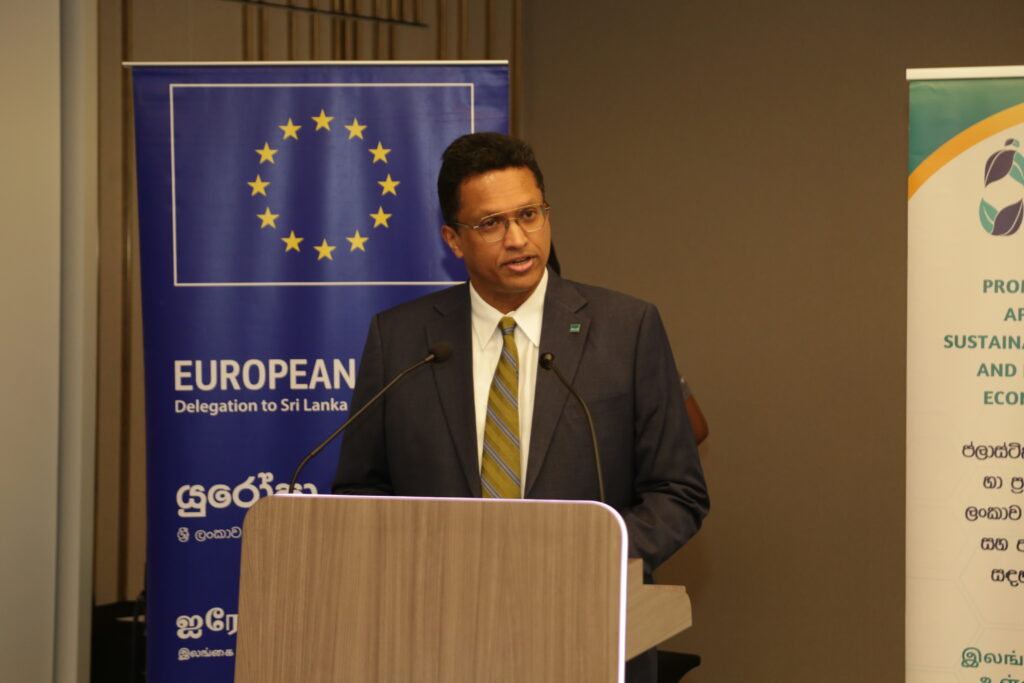
In his opening address, Mr. Dilhan C. Fernando, Chairperson of Dilmah Ceylon Tea Company and Chairman of BSL, stressed the importance of green finance in building a resource-efficient, low-carbon economy. He stressed the need for Sri Lankan financial institutions to understand global financial flows and find innovative ways to tap into them.
Central Bank Governor, Dr. P. Nandalal Weerasinghe, provided insights into the role of the Central Bank of Sri Lanka in fostering green financial ecosystems and informed the participants that, CBSL was in the process of developing the green taxonomy and sustainable finance roadmap. He underscored the urgency of transitioning to green finance given Sri Lanka’s environmental vulnerabilities and escalating global challenges.
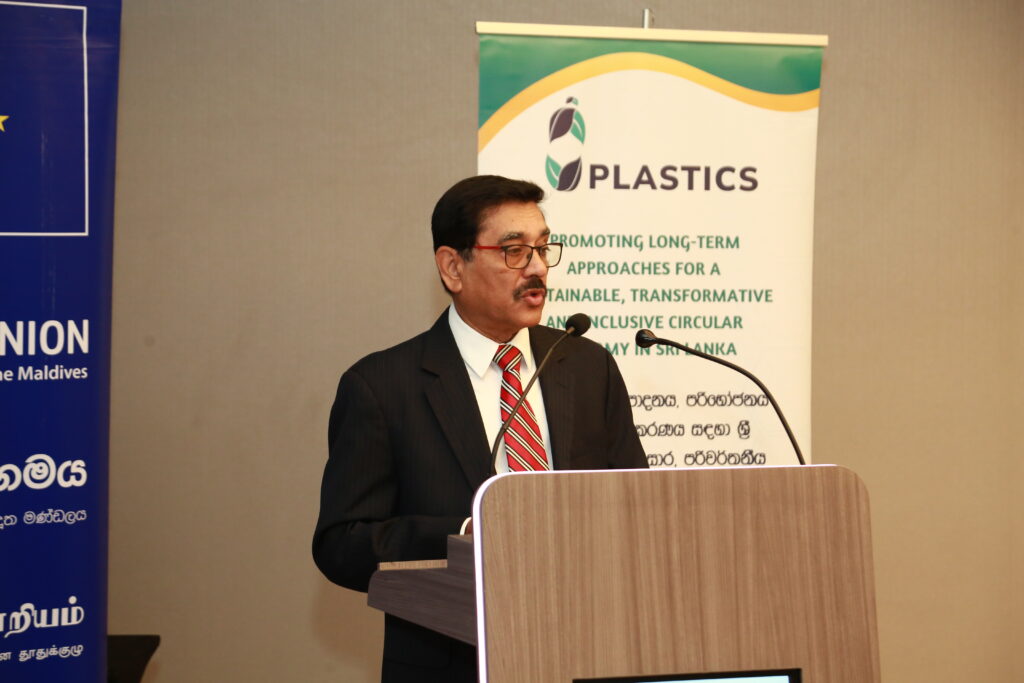
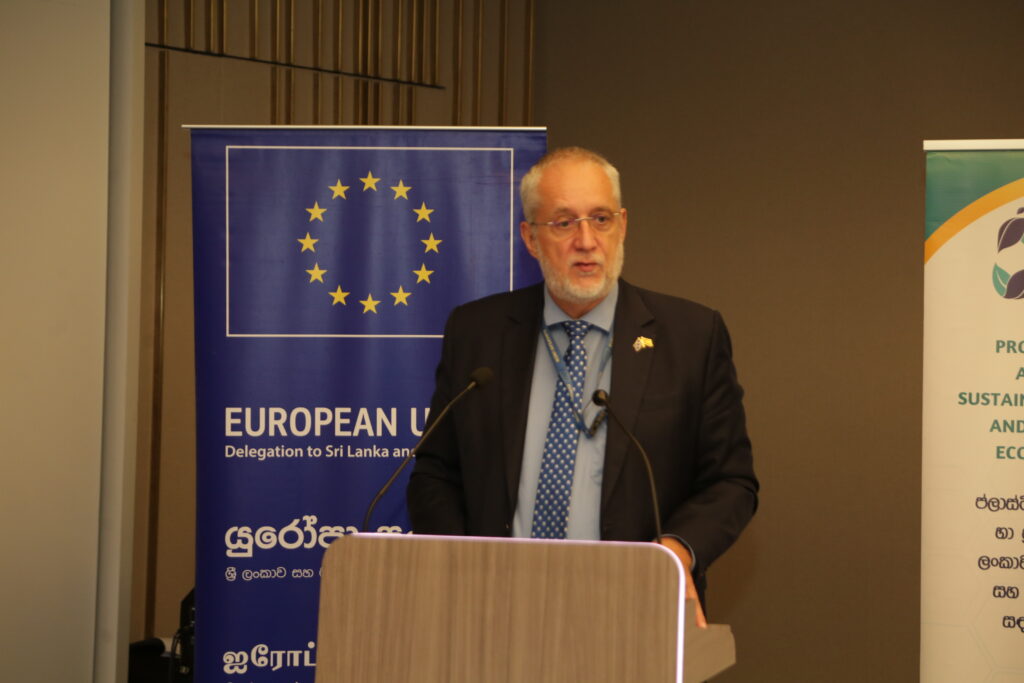
The programme highlighted the European Union’s Global Gateway strategy, which aligns economic growth with sustainability goals by leveraging green financial tools. Dr. Johann Hesse, Head of Cooperation at the EU Delegation to Sri Lanka, further emphasised the EU’s commitment to a green economic recovery, focusing on mobilising resources for transformative sustainable initiatives.
Co-founder/Director, Centre for a Smart Future
Mr. Anushka Wijesinha presented findings from the 2024 Green Finance Maturity Assessment (GFMA), outlining key opportunities and gaps in Sri Lanka’s financial sector to advance green initiatives. A key finding from the GFMA is that while green finance opportunities are growing – including funding lines for financial institutions and new lending opportunities for green projects – there remains a lack of comprehensive understanding within the market. Many financial institutions are unsure about their relative performance or where they stand in adopting green finance compared to industry benchmarks. This highlights an urgent need for capacity building and awareness among financial institutions, enabling them to better position themselves to leverage emerging opportunities and contribute to sustainable economic development.
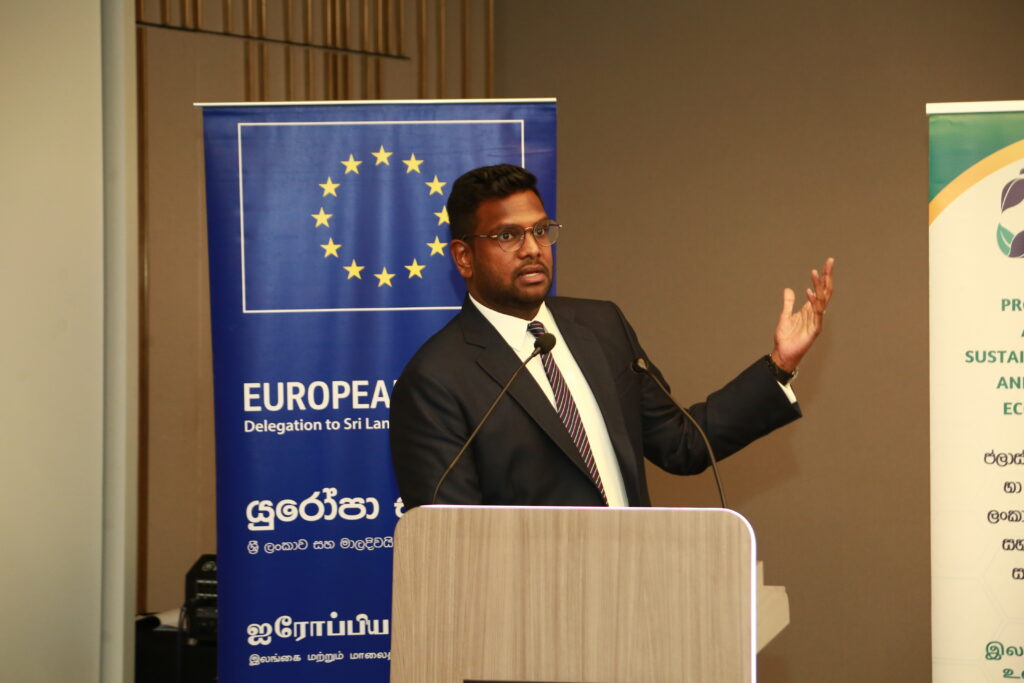

The PLASTICS Project’s Green Finance component focuses on improving access to funding for SMEs to drive circular economy initiatives. BSL’s Green Finance Specialist, Mr Errol Abeyratne, noted, “Green finance is crucial for a sustainable future, but gaps in knowledge and reporting frameworks hinder progress.” The project addresses these barriers through initiatives like a digital toolkit and a practitioners’ forum, empowering businesses and financial institutions to embrace sustainability.
The event concluded with engaging discussions on actionable strategies to promote green financial solutions, empowering institutions to lead in sustainable economic transformation. This strategic briefing reinforced the PLASTICS Project’s role in driving private sector engagement and advancing circular economy principles as key enablers for environmental stewardship.
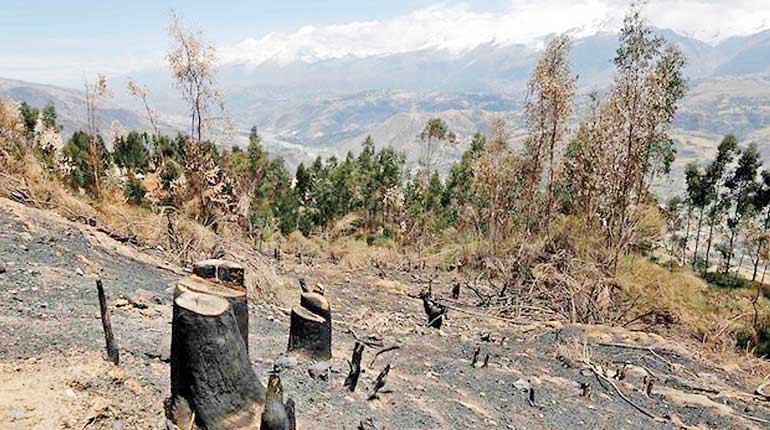
Sustainability now: Sustainability and value systems
(REDD+ economics advisor of UNEP, Ivo Mulder, says that changes to our natural environment through activities like deforestation will affect many businesses in a number of ways – Reuters )
n early October Ivo Mulder, a REDD+ economics advisor of UNEP, wrote an article titled ‘Valuing the Invaluable in Business’ where he elaborated on the difficulty of putting an economic value on our natural environment and links the reader to different kinds of tools with which businesses can prepare for the effects environmental challenges pose.
Given the difficulty of applying financial values to nature, often the environment’s value is considered ‘0’ or ‘priceless Nevertheless, it is also commonly understood by many that given the way humanity is currently progressing there will be a negative impact on society and businesses at a certain point in time; real economic and financial impacts.
The author describes different examples where unsustainable environmental conduct has already negatively affected the costs and revenues of businesses, such as the IOI Corporation and a Malaysian palm oil producer who faced a severe share price decrease linked with illegal deforestation in Indonesia.
Such developments influence not only the company itself but everyone who has put money into it such as stock and bond holders as well as banks and other investors.
“The takeaway message is that changes in our natural environment – deforestation, water scarcity and greenhouse gas emissions building up in our atmosphere – are real and if left unaddressed will affect many businesses in a vast multitude of ways. On the other hand, those who are well prepared and know how to navigate changes in consumer and investor preferences related to natural capital will be much better positioned to weather the storm,” the article states.
There are a number of tools out there which can guide and help businesses to evaluate their status and find customised solutions. Ivo Mulder mentions the “Natural Capital Coalition” and their protocol and sector guides, the “Natural Capital Declaration” or Bloomberg’s and NCD’s “Water Risk Tool”. “What these tools have in common is that they are Excel-based, free to download from the internet, focus exclusively on the financial impact of natural capital risks, and are customisable, meaning that anyone can override the assumptions in the model and add new companies,” asserts Mulder.
Evaluating opportunities
Besides the direct influence of environmental challenges on the balance sheet, companies are advised to have a proactive look at their corporate conduct and assess in which way it needs natural and social resources to run profitably.
Corporate leaders should in addition evaluate the opportunities arising from the changing world in developing businesses which as a basic understanding do not make things worse but are able to deal with natural and societal changes and further than that, create business models which improve the current situation our planet is in.
They can reap business opportunities based on these challenges, which include resource scarcity, greenhouse gas emissions, deforestation, agriculture and land use, rising energy and food demand, and have profitable companies facilitating change in the right direction.
There are various companies which already understand these opportunities. In Sri Lanka for example, a renewable energy company which is focusing on biomass has in recent years built up a supply chain including more than 40,000 small farmers who grow Gliricidia, a sustainable, rapidly growing short rotation tree, within a triple fence around their land. Within a multitude of farmer trainings they were able to reach trusted and committed suppliers who were in turn reaping additional benefits such as being able to make organic fertiliser, pesticide and fungicide from the Gliricidia leaves and small branches which help them to save the Government’s subsidy for fertilisers.
How to make this organic fertiliser is also taught in the same farmer training. With this out grower model the company was able to plant 60 million trees across the North of Sri Lanka. To produce biomass only the large branches of the trees are cut, the stem however remains and is used as carbon sink. With this business model, the company is able to make money by facilitating environmental protection (fewer chemicals used in agriculture), increasing forests, increasing farmers’ incomes and skills and facilitating renewable energy to the country.
Earlier the opinion prevailed that companies were looking after jobs and profits and civil society was looking after society and environment. However this assumed often that companies were “excused” when they had a negative impact on both of the other two dimensions.
We as a society cannot afford such behaviour anymore. The time is gone when there was enough forest to be cut down and the only desire was to build a skyscraper or highway. We are going to lose out in the end if we continue to think that development goes hand-in-hand with construction and “getting rid of nature and anything which is considered old and out-fashioned”.
Green bonds
In Sri Lanka we look at the West and its “development” and in turn the West looks at Sri Lanka and its resources and still intact ecosystems. Yes, a society will always strive to develop, however we have to change the approach or we will end up in the same position the West now finds itself in – it might have the infrastructure we desire, however it faces a multitude of other issues which we have in common globally, and which are linked to the natural environment. The world is changing and with it its many industries as we have understood them so far.
“The market for green bonds is rapidly expanding with close to $ 700 billion of climate-aligned bonds outstanding in 2016. There are plans to issue the first green bond that would specifically finance commercially viable projects that have a positive effect on the sustainable landscape management,” wrote Mulder.
By June 2016, 579 companies had made pledges to remove forest destruction from their supply chain. This means that a company does not only need to show that it is not harming the environment to achieve finance from a green bond but it also needs to show the positive effect it has on the environment and this is one crucial game changer. Now it is not only about voluntary reporting. Now we talk about large-scale financing opportunities.
To measure one’s own impact there are a number of tools available such as the GRI guidelines, UN Global Compact, OECD guidelines, ISO standards, etc. where a company can measure its footprint. In addition, environmental and societal changes have to be considered in core management decisions depending on the nature of a company’s linkages with these dimensions.
Where such tools offer guidance and evaluation systems, rankings and ratings are often flawed based on the research method they apply. When looking at Forbes’ most sustainable companies in 2016, we have 50 global companies ranked with a large car company leading the group. Where the assessment looked into waste management, resource efficiency, human resource management and so on it did not evaluate the very core activities of companies from the angle outlined above.
Where for sure these companies invest significant time and resources in their sustainability activities their main business activities do not often reflect the sustainable development agenda. A company which needs large amounts of water in their factories does not only need to invest in small water projects in the country within CSR projects; it needs to ensure that the water it takes does not lead to shortages somewhere else. It needs to put systems into place that balance out the water demand of their production. Therefore, to look at the research method of such rankings is crucial.
Finally, as understood from Mulders’ article, whether being ranked or not, a company nowadays has to evaluate its impact as well as its dependence on the natural environment and society and set up its core business accordingly. A few years down the line no one is going to care about rankings anymore but rather about how to sustain their company in a world which is facing a multitude of challenges and there is no indication yet that these are going to reduce within societies and the natural environment. –
Source : 2/11/2016 Daily FT http://www.ft.lk/article/577477/Sustainability-now–Sustainability-and-value-systems#sthash.VtGYMl7c.dpuf

Construction and forest clearing in Wilpattu National Park violates conservation laws
WNPS expresses deep concern
The Fauna and Flora Protection Ordinance No 2 of 1937 (as amended, hereinafter at times referred to as the FFPO) which governs the legal administration of the Protected Areas of Sri Lanka clearly states that there can be no development activity or clearing of the habitat within National Parks (Section 6).
According to information available, the Pallenkandal Shrine was built over 300 years ago in what is now the Wilpattu National Park. It was a small chapel placed in an area of less than a quarter of an acre, and was used in an annual feast for fishing communities who reside around the Puttalam Lagoon.
They visited the shrine for two nights a year and stayed in temporary shelters until the festival was over. These shelters were then dismantled at the end of the feast.
During the war, this chapel went into disuse, and the building fell into disrepair, with the roof caving in. Since the end of the war, however, not only has the shrine been rebuilt to greater size than the original, but additional structures have now been added with clearing being made beyond the original boundaries of the shrine.
These are areas previously used by herds of elephants who traditionally graze on the grasslands of the Pomparippu Plain within the National Park, and have done so for thousands of years.
The Wilpattu National Park comprises five Blocks which have been gazetted at various times from 1938 to 1973 under the FFPO. Upon such protection status being given, by operation of Law, all private tenements, rights and privileges seized to be operational over the said land, unless otherwise recognized by Law as a ‘traditional practice/use’ subject to Section 3 (a & b) and 4 of the FFPO inter alia.
They have, however, no right to expand the boundaries of the original site, or to change what was traditionally an annual event to a weekly/monthly feast, as happens now.
The Wildlife & Nature Protection Society (WNPS) is greatly concerned that this blatant breach of the laws of the country are taking place with the Department of Wildlife Conservation (DWC), the statutory guardian of the protected areas, taking no action to stop this illegal development taking place within the boundaries of a National Park.
It is the WNPS’s position that the construction and forest clearing undertaken by the St. Anthony’s Church at Pallenkandal, in the recent past, are inside the Wilpattu National Park and being carried out without resorting to the proper Law and procedure. The construction/renovation and clearing of forest land conducted by and/or on behalf of the said church are in violation of the Law of the Land i.e. Sections 6 (1) of the FFPO No 2 of 1937 (as amended).
In addition, the detrimental impact on the National Park caused by the uncontrolled and/or unregulated human intrusion by thousands of pilgrims who visit the church on a weekly/ monthly/annual basis cannot be ignored, and amount to an offence under the Sections 5, 5 (A), 5 (B) & 6 (1) of the FFPO.
Even to claim any right under ‘traditional use’, a claim which the WNPS does not concede to, the applicable provisions of the FFPO are quite clear that such a right should be exercised subject to the control and supervision of the DWC, as the Custodian of the Wilpattu National Park, who hold it in trust for and on behalf of the people of the Republic.
As such, there is a grave failure on the part of the DWC to uphold their mandate and effectively enforce the law within the boundaries of the Wilpattu National Park.
Rukshan Jayewardene, President of WNPS, said: “National Parks are declared because a nation values and intends to protect its Fauna and Flora that forms an integral part of its natural heritage. National Parks afford the greatest level of statutory protection for wilderness, while also providing for regulated public access.
“Governments hold these lands in trust for all citizens and special interest groups cannot be allowed to violate the integrity of such Protected Areas”.
The WNPS, at 122 years old, is the oldest Non-Governmental Organization in South Asia. It was responsible for setting up and administering the National Parks, and inaugurating the Department of Wildlife Conservation.
With such history and responsibility, the Society is determined to take whatever action is necessary to prevent a precedent being set that will have serious consequences to the future well-being of all of the protected areas of Sri Lanka. Their preservation is vital not just for environmental, cultural and aesthetic reasons, but also for the economic prosperity of this country, and for the benefit of future generations to come. (WNPS Press Release).
Source: The Island http://island.lk/index.php?page_cat=article-details&page=article-details&code_title=150677
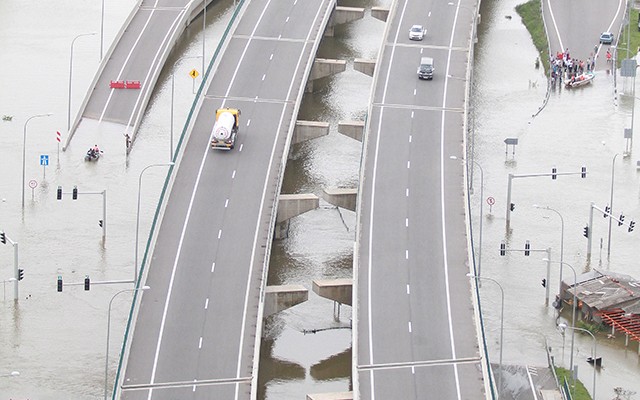
Delicate balance between Development and environment
According to government reports, recent floods and landslides in Sri Lanka have caused widespread disruption across country. Over 400,000 people have been displaced by floods, many casualties have been reported, and dozens are feared missing. Government puts this down to climate change. Such disasters were on the discussion table since 2010, and it was to be expected.
Center for environmental and Nature studies (CENS), Sri Lanka repeatedly reached out to the Environment Ministry and relevant authorities to put a stop to the destruction of environmentally-sensitive areas while implementing the National Physical Plan. But such entreaties were blatantly disregarded. This capitalist system is bent on increasing profit for the business community and decreases quality of life. This article elaborates on the reasons for flooding, landslides and other disasters.
The National Physical Plan to be implemented from 2011 to 2030 creates serious negative impacts on the ecosystems, so far untouched by development interventions. As a result of Colombo-Matara Highway, Sinharaja forest would be fragmented twice and 39 forests, including Sinharaja will be destroyed due to the proposed-development activities. Bibile, Nilgala area would have tremendous negative repercussions as a result of the proposed-hotel complexes.
Forests act as a barrier to soil erosions. Roots systems of these trees hold the soil layers together, protecting the earth from landslides. Destruction of forest cover increases soil erosion and risk of landslides. The percentage value of available forest area in 2012 is around 16.5 and by 2030, it is estimated that this will be further reduced to between 13 to 10 per cent with the decrease of forests due to the implementation of National Physical Plan, if the current government decides to go through with it. Ground water levels in the forests will deplete, and rivers will suffer from acute water shortage and go dry. It has been identified that 103 rivers will turn dry as in the case of Maguru Oya which is almost completely dried out.
There are riffles and pools midstream of every river. According to our research observations, riffles and pools have been covered by concrete buildings and roads. Micro-hydro projects and mega-development projects have blocked water-feeding channels, in Kelani River, for example. Riffles and pools are located in Kaluaggala, Avisswella, Waga and Hanwella areas. Colombo-Avissawella Road and many building were built, blocking and destroying riffles and pools. This is the cause for the many floods and landslides in many areas.
Flow of water in the riverbed should be natural. In the Sri Lankan scenario, downstream riverbeds are filled with sediments, hindering the natural flow of water. Sediment is transport to riverbeds from flood plains; erosion and construction around rivers increase flood and landslides. For example, due to construction of Pico hydro power on top of Laxapana waterfall and Kitulgala, Kelani River receives tons of sediments. This has resulted in increased incidence of flooding in Hanwella and Colombo areas. Most rivers receive lots of sediments from mega highway construction activities and other mega development sites.
In the process of building large cities, highways, airports, tourist hotels, a large number of minor tanks will disappear and tank cascades will be blocked disrupting natural water flow. As a result, droughts and floods will become a recurrent feature in Anuradapura, Polonnaruwa, Trincomalee and Kurunegala.
Many floodplains are being ravaged by mega development projects. For example, a highway was built destroying Muturajawela wetland and many other wetlands in the country. Before the highway was built, not a single incident of flooding was reported in Kaduwela and Ja-Ela areas. Encroachment of floodplain has caused massive disasters in the past. Many floodplains have been converted to build sites of homes, businesses and other urban development activities.
This is most evident in Kelani River, during rainy season when water level of Kelani River goes up flooding human settlements built in the floodplain.
The Mahaweli Development Plan which kicked off with the anticipation of tremendous development within a short period resulted in ecological disasters such as landslides, increased incidence of floods, human-elephant conflict, land fragmentation and loss of biodiversity. The country is still paying debts to international funding agencies that funded Mahaweli Accelerated Development Programme. This trend continues with the development activities proposed under the National Physical Plan.
In another example, many people die in the Meeriaybedda landslide in 2014. The cause of the landslide is believed to be the drilling and blasting method used for rock breaking and tunnel drilling of the Uma Oya project. The vibration caused by the process subjects the area to the inevitable risk of landslides in the future.
We have enough environmental laws to protect nature and prevent disasters, but all laws are under political and monetary influence. Funds for the destructive National Physical Plan are provided by funding agencies such as the World Bank and Asian Development Bank.
John Parkinson in his Book Confession of an Economic Hit Man recounts how countries like America believed in a rapid, tremendous development through and when they found that their developmental interventions failed one by one, they attempted to maintain their economy by exploiting other countries with high interest rates and conspiracies to topple governments acting against their policies and so-called development programmes.
In Parkinson’s view, the capitalist countries build hope in the minds of leaders in poor countries through their imaginary models for rapid economic development. One such example is Norochcholai Coal Power Project in Sri Lanka. The project has failed to provide any of the benefits promised at inception.
Parkinson further says that foreign companies provide loans through which developing countries can be caught in an everlasting debt trap. Capitalist countries make huge profits through interest charged for loans and exploitation of natural resources of the countries concerned. They are also concerned with appointing people who obey their policies and commands as the leaders of these countries.
Similar fate would befall Sri Lanka, if the current government is to follow through with the National Development Plan. Mega development does not sustain the world. Luxury apartments, highways, airports, megacities, supermarkets cannot be considered socio-economic indicators of a country. Though capitalist regimes unconditionally stand by the National Physical Plan, World Bank and Asian Development Bank agendas, they do not bother about the priorities of the vulnerable majority.
Source 30-05-2016 Nation( Sri Lanka http://nation.lk/online/2016/05/28/delicate-balance-between-development-and-environment.html
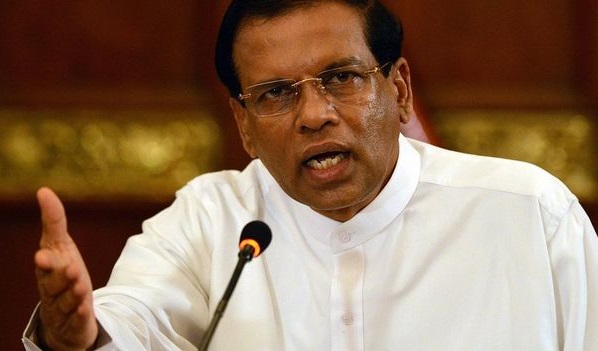
President Sirsena pledges to take strict action against environmental destruction
President Maithripala Sirisena while addressing an event held in Polonnaruwa today, stated that if any environmental harm is reported in a certain area, strict action will be taken against the responsible government official in the area.
The event was held at the Sevamuktha Kandavura Maha Vidyalaya in Polonnaruwa this morning to declare the National Environment Week, parallel to World Environment Day which falls on the 5th of June.
President Sirisena planted a Na sapling at the school premises to mark the Tree Planting Programe implemented in line with the National Environment Week. Gold medals were awarded for the Environmental Pioneer Brigade in the Dimbulagala area under the auspices of the President.
The President in his address pointed out that the Kelani River basin in the Colombo District lies completely destroyed today and around 150 meters on either side of the banks of the Kelani River are full of constructions and all reserves which belong to this river are destroyed.
He further added that buildings have been constructed over the canals, drains and waterways in Colombo and especially Kolonnawa and it is the politicians, state officials and everyone of their respective eras who should be held responsible for this and if any unauthorized buildings or environmental pollution happens in a way which damages the canal and river preservation in any area, strict action will be taken against the responsible government officials in these areas.
(Source : 30-05-2016: News First (Sri Lanka http://newsfirst.lk/english/2016/05/president-sirsena-pledges-take-strict-action-environmental-destruction/137861)
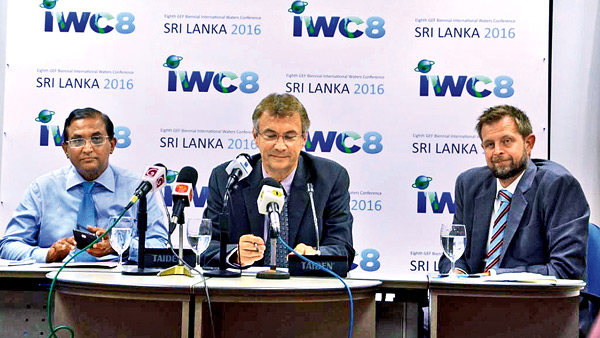
Global Environment Facility IWC In Sri Lanka
The 8th Global Environment Facility (GEF) Biennial International Waters Conference (IWC) will be held in Sri Lanka from May 9 to 13 with representatives from over 80 countries. The week-long conference themed Scaling Up Investments from Source to Sea in the Context of Achieving the SDGs, is jointly organised by the GEF, the Mahaweli Development and Environment Ministry and the United Nations Development Programme (UNDP). IWC held for the first time Sri Lanka, will be graced by President Maithripala Sirisena and the CEO and Chairperson of GEF Dr. Naoko Ishii.
Mahaweli Development and Environment Ministry Secretary Udaya Senevirathne, GEF International Waters Focal Area Environmental Specialist Christian Severin and UNDP Country Director Joern Soerensen joined a briefing to inform the media about the upcoming conference.
Udaya Senevirathne said “safeguarding and managing our water resources remain a priority for the President, who oversees this portfolio and with his guidance, we are keen to partner with GEF and UNDP to host this conference in Sri Lanka for the first time”. He said, “the conference will provide the international practitioners the opportunity to learn about good water management practices, coastal zone management, protected areas and alternative livelihoods in Sri Lanka”.
The conference is expected to bring 250 foreign delegates, including government ministers from Seychelles, Maldives and representatives of GEF beneficiary countries, non-governmental organizations, transboundary waters management institutions, United Nations Agencies, GEF International Waters project managers and staff, and the international private sector. Over 80 countries will be represented at the conference.
UNDP Country Director Joern Soerensen said “With the new global development commitments in mind, IWC organised under the theme Scaling Up Investments from Source to Sea in the Context of Achieving the SDGs will be very important. Especially as it will look at two SDGs—Ensure access to water and sanitation for all and Conserve and sustainably use the oceans, seas and marine resources— with learning tracks devoted to catalysing transformation and scaling up investments; strengthening governance processes to sustain project interventions; and data to policy”.
The GEF Biennial International Waters Conference is the signature learning event for the GEF International Waters portfolio of projects. The IWC objectives are to facilitate cross-sectoral and portfolio-wide learning and experience sharing. Participants sum up progress achieved and also look to the future of programming within and beyond the GEF International Waters focal area.
GEF International Waters Focal Area Environmental Specialist Christian Severin noted, “this 8th IWC will represent about 70 active GEF International Waters projects and will strive to solicit advice from the existing GEF International Waters portfolio on burning issues related to international waters management, and to assist in building participant capacity in key management and technical areas”.
Christian Severin said, “At this conference we are proud to celebrate 25 years anniversary of the GEF and the International Waters Focal Area. With a GEF International Waters portfolio consisting of 242 projects with a portfolio amounting to a total of $10 billion in combined GEF and cofinancing, the GEF International Waters will continue to deliver substantial results and impacts on the local, national and regional level.
The GEF, as the largest financier of cooperation in shared waters systems, occupies a unique space in the International sphere to facilitate countries delivery towards a suite of the SDGs, with a specific focus of SDG 6 and 14”, in the process leading to sustainable management of shared aquifers, lakes, rivers, Large Marine Ecosystems and Open Oceans.
( Source 6 May 2016-Daily News-Sri Lanka)






